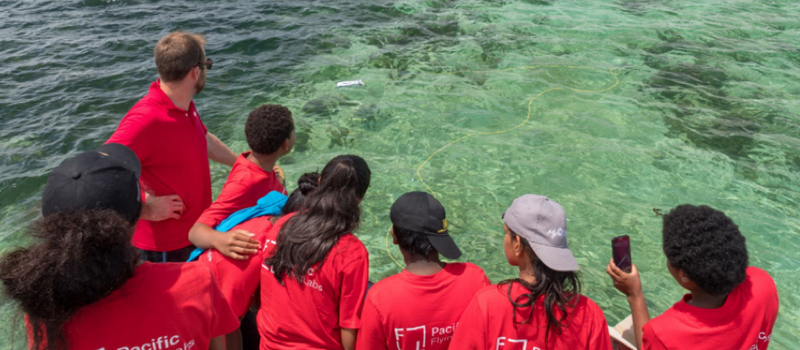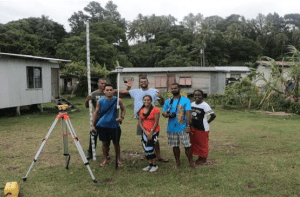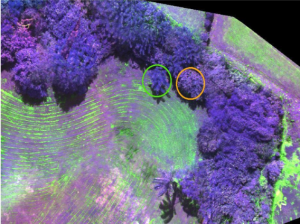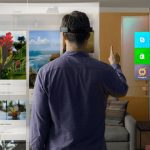 PTC funding is putting state-of-the-art information and communications technology (ICT) in the hands of local youths living in traditional Pacific island settings.
PTC funding is putting state-of-the-art information and communications technology (ICT) in the hands of local youths living in traditional Pacific island settings.
Access to aerial and marine drones, environmental sensors, high-precision GPS, and multispectral imaging technology means these youths can map, monitor, and evaluate their environment in a traditional resource management context. By providing information at the source, communities can react quickly to changes and implement sustainable solutions.
The Tradition and Technology project has focused to date on mangrove species distribution and health, community vulnerability assessment including flood risk from sea-level rise, and marine resources assessment.
 A series of community workshops introduced the technology from which issues in need of attention were identified. Community workshops were held across the island of Viti Levu and to some of the outer islands such as Gau Island. These community workshops have accelerated the scale of impact of how ICT technology can be beneficial to a traditional Fijian setting.
A series of community workshops introduced the technology from which issues in need of attention were identified. Community workshops were held across the island of Viti Levu and to some of the outer islands such as Gau Island. These community workshops have accelerated the scale of impact of how ICT technology can be beneficial to a traditional Fijian setting.
Not only have the locals realized how salient the use of ICT is within their traditional Fijian community, they have also taken up the initiative of joining the ongoing projects so that they, too, can make a difference. Through this, we were able to develop a powerful partnership between the communities and hence enabled these communities to monitor their local environment.
Using a combination of scientific method, traditional knowledge, and ICT, communities have been enabled to collect the data they need in order to make informed decisions on changes in their local environments and assess likely future impacts. This gives the community the power to implement appropriate strategies for adaptation.
Real-time environmental sensors are helping us to understand invasive plants in mountain forests while drone imagery assists us in monitoring the distribution and health of our mangroves and the role they play in coastal protection, medicine, and fisheries. Marine drones are employed to survey coastal marine biodiversity for both environmental and food resource purposes, such as beche de mere, seagrasses, and coral reefs.

Some of the most significant remnants of mangroves on Suva Peninsula were achieved through the hard work and dedication of Fiji’s youths, both from local schools and the University of the South Pacific.
Project leader Nick Rollings, associate professor of the University of the South Pacific’s School of Geography, Earth Science and Environment, said “By putting the tools into the hands of the traditional land and sea owners, we have started a [from the] ground up movement that strives for real capacity building at the local level with rising expectations that their local efforts will lead to global solutions in such areas as adaption to environmental change induced by variations in climate.”
The PTC project has successfully helped the establishment of baseline data for long-term monitoring programmes for these important environments. Targeted Fijian communities include Naboutini Village, Naviyago Village, Muanivatu settlement, Korova Village, Gau Island, Colo-i-Suva rainforest, sandbank, Ellington Wharf, Suva foreshore, and Maui Bay.
The PTC project has given us the key for aligning appropriate ICT technology within traditional Fijian communities and has given the local graduates the understanding to look within for solutions rather than seek help at every turn.
For more information about this project, please access the complete report: PTC Tradition and Technology Project by Aleen Prasad and Nick Rollings.

PTC funding is putting state-of-the-art information and communications technology (ICT) in the hands of local youths living in traditional Pacific island settings.
Access to aerial and marine drones, environmental sensors, high-precision GPS, and multispectral imaging technology means these youths can map, monitor, and evaluate their environment in a traditional resource management context. By providing information at the source, communities can react quickly to changes and implement sustainable solutions.
The Tradition and Technology project has focused to date on mangrove species distribution and health, community vulnerability assessment including flood risk from sea-level rise, and marine resources assessment.
 A series of community workshops introduced the technology from which issues in need of attention were identified. Community workshops were held across the island of Viti Levu and to some of the outer islands such as Gau Island. These community workshops have accelerated the scale of impact of how ICT technology can be beneficial to a traditional Fijian setting.
A series of community workshops introduced the technology from which issues in need of attention were identified. Community workshops were held across the island of Viti Levu and to some of the outer islands such as Gau Island. These community workshops have accelerated the scale of impact of how ICT technology can be beneficial to a traditional Fijian setting.
Not only have the locals realized how salient the use of ICT is within their traditional Fijian community, they have also taken up the initiative of joining the ongoing projects so that they, too, can make a difference. Through this, we were able to develop a powerful partnership between the communities and hence enabled these communities to monitor their local environment.
Using a combination of scientific method, traditional knowledge, and ICT, communities have been enabled to collect the data they need in order to make informed decisions on changes in their local environments and assess likely future impacts. This gives the community the power to implement appropriate strategies for adaptation.
Real-time environmental sensors are helping us to understand invasive plants in mountain forests while drone imagery assists us in monitoring the distribution and health of our mangroves and the role they play in coastal protection, medicine, and fisheries. Marine drones are employed to survey coastal marine biodiversity for both environmental and food resource purposes, such as beche de mere, seagrasses, and coral reefs.

Some of the most significant remnants of mangroves on Suva Peninsula were achieved through the hard work and dedication of Fiji’s youths, both from local schools and the University of the South Pacific.
Project leader Nick Rollings, associate professor of the University of the South Pacific’s School of Geography, Earth Science and Environment, said “By putting the tools into the hands of the traditional land and sea owners, we have started a [from the] ground up movement that strives for real capacity building at the local level with rising expectations that their local efforts will lead to global solutions in such areas as adaption to environmental change induced by variations in climate.”
The PTC project has successfully helped the establishment of baseline data for long-term monitoring programmes for these important environments. Targeted Fijian communities include Naboutini Village, Naviyago Village, Muanivatu settlement, Korova Village, Gau Island, Colo-i-Suva rainforest, sandbank, Ellington Wharf, Suva foreshore, and Maui Bay.
The PTC project has given us the key for aligning appropriate ICT technology within traditional Fijian communities and has given the local graduates the understanding to look within for solutions rather than seek help at every turn.
For more information about this project, please access the complete report: PTC Tradition and Technology Project by Aleen Prasad and Nick Rollings.




